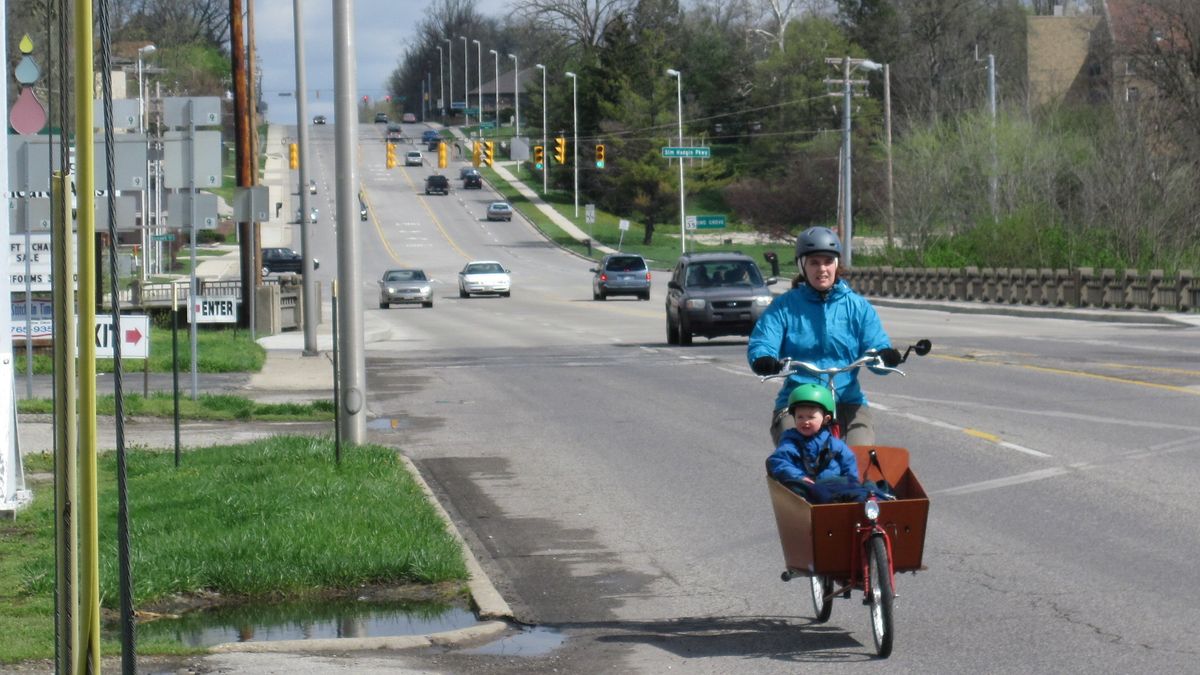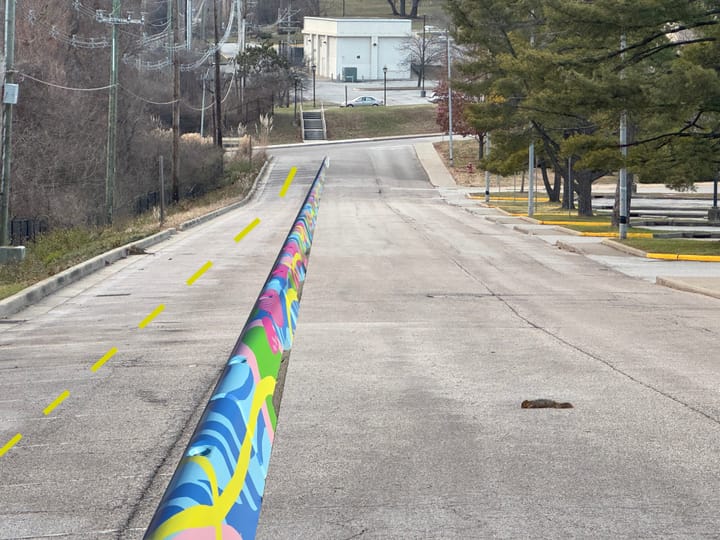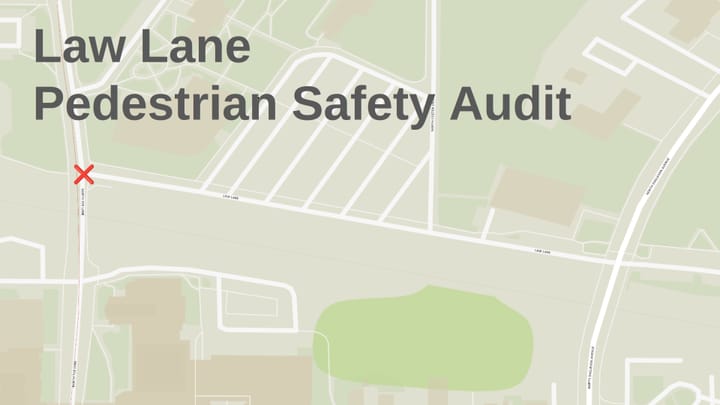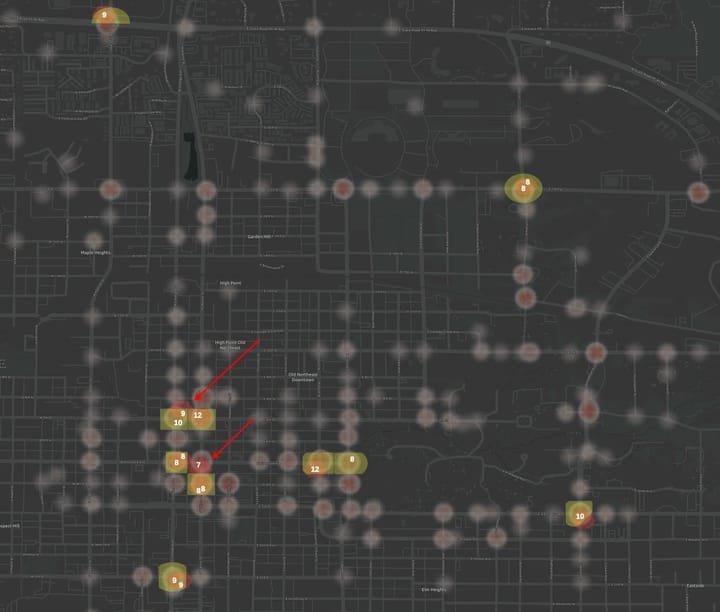How to find out if bike lanes will fit on your street for $25.

There are likely roads in your own community that you suspect are already wide enough to accommodate a bike lane– They just need stripes to mark the lane. You can check road widths yourself by using a measuring wheel, found for about $25 on E-bay. A measuring wheel measures distances as you walk. To measure the road width, you just have to walk across the road while rolling the wheel.

Keep in mind these details and do the math to determine if you’ve already got room for bike lanes:
| Road Element | Width |
|---|---|
| Standard through traffic lane | 11 feet |
| Standard parking lane | 8 feet |
| Standard bike lane | 5 feet |
| Standard center turn lane | 12 feet |
| Possible gutter | 1.5 feet |
| Possible buffer* | 3 feet |
* The possible buffer zone is between parked cars and the bike lane, to prevent “dooring” and allow for possible snow piles in winter.
There are cases where narrower minimum lane widths for all cases may be acceptable.
If you have GIS skills, you may also be able to find published street widths through your city's "open data portal" where public map data is shared.
Armed with these calculations, use Street Mix or BetaStreets to design your new street. Armed with maps with Street Mix designs, you you can make a much stronger argument to City Hall. You will have a strong argument by definitively showing that no costly road width expansion will be needed.
Note that roads appear to have a constant width often to do not. Consider measuring the road width at multiple points, noting the location where each measurement was taken.
But you may also find that there is in fact no room to simply stripe a bike lane on roads you check. There are still possibilities to make roads more bikeable by using a road diet or the bike boulevard concept, also known as Neighborhood Greenways.
Related Posts
- The Power of Paint in Street Transformation by Strong Towns
Update: November, 2011: This strategy worked! The City of Richmond, Indiana recently approved a new long-term transportation plan which included some of our recommendations based on DIY road measurements and reviews posted online. The consultants who developed the plan found our site and credited Bike Richmond with making some specific recommendations.



Comments ()